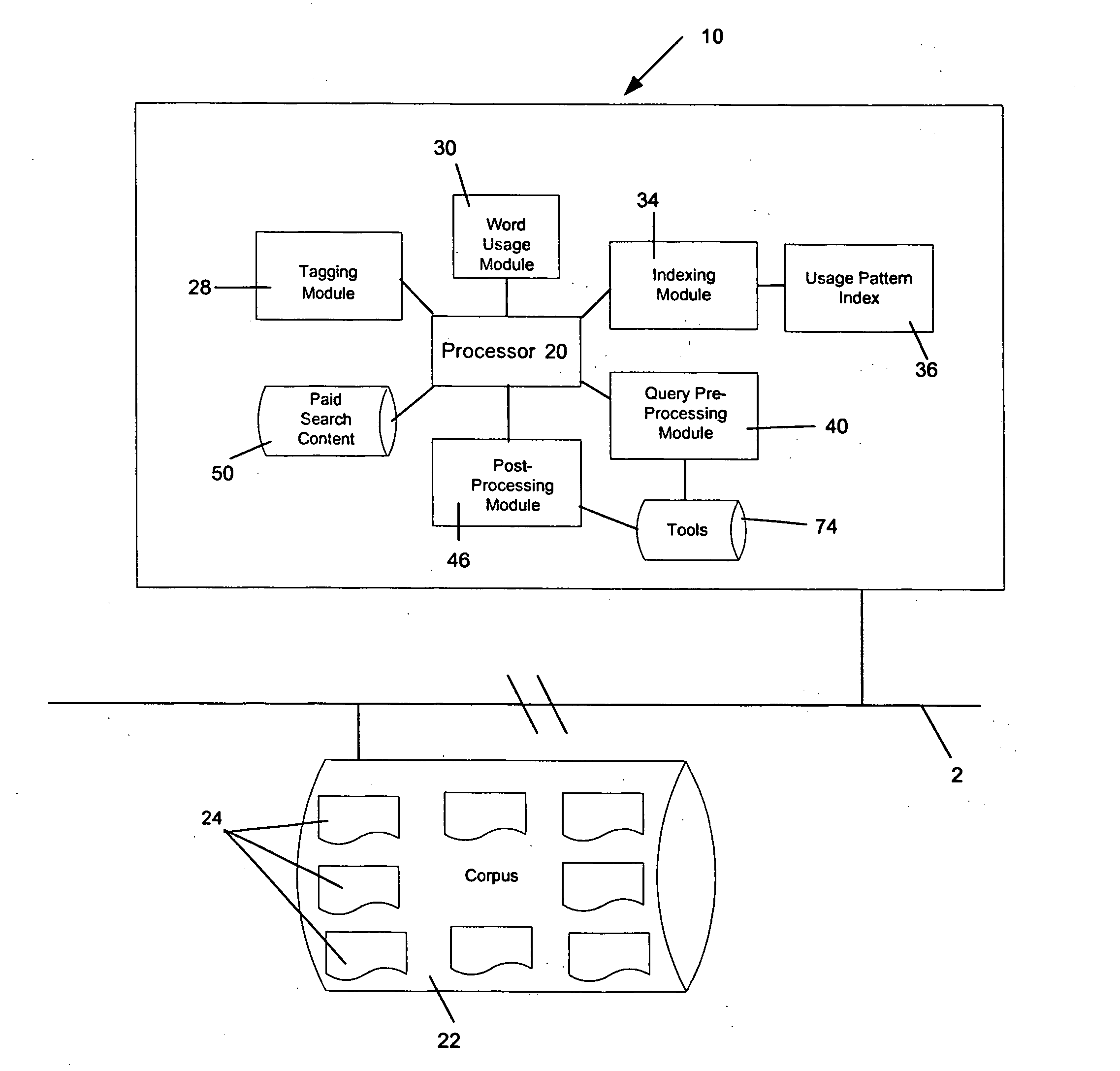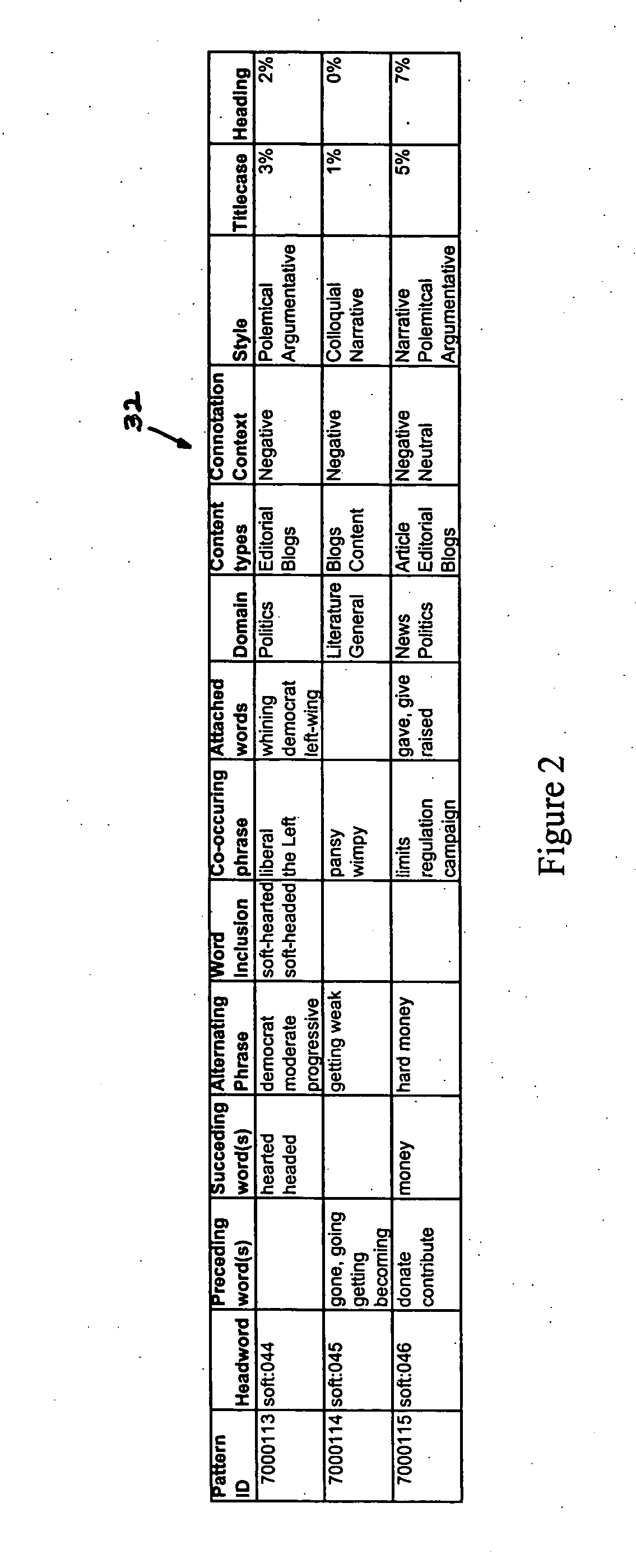Method and system for semantic search and retrieval of electronic documents
a semantic search and electronic document technology, applied in the field of semantic search and retrieval of electronic documents, can solve the problems of increasing the prospective cost of manually tagging a corpus, reducing the inclusion of irrelevant electronic documents, and presenting the biggest limitation of search applications
- Summary
- Abstract
- Description
- Claims
- Application Information
AI Technical Summary
Benefits of technology
Problems solved by technology
Method used
Image
Examples
Embodiment Construction
[0066]FIG. 1 illustrates a schematic view of a semantic search system 10 in accordance with one embodiment of the present invention for semantically searching for electronic documents stored in a computer readable media in response to a query, and providing a search result. The above noted advantages are attained by the semantic search system 10 of the present invention which utilizes a novel method involving analysis of word usage patterns that provide another dimension of linguistic analysis related to word senses.
[0067] It should initially be understood that the semantic search system 10 of FIG. 1 may be implemented with any type of hardware and / or software, and may be a pre-programmed general purpose computing device. For example, the semantic search system 10 may be implemented using a server, a personal computer, a portable computer, a thin client, or any suitable device or devices. The semantic search system 10 and / or components thereof may be a single device at a single loc...
PUM
 Login to View More
Login to View More Abstract
Description
Claims
Application Information
 Login to View More
Login to View More - R&D
- Intellectual Property
- Life Sciences
- Materials
- Tech Scout
- Unparalleled Data Quality
- Higher Quality Content
- 60% Fewer Hallucinations
Browse by: Latest US Patents, China's latest patents, Technical Efficacy Thesaurus, Application Domain, Technology Topic, Popular Technical Reports.
© 2025 PatSnap. All rights reserved.Legal|Privacy policy|Modern Slavery Act Transparency Statement|Sitemap|About US| Contact US: help@patsnap.com



